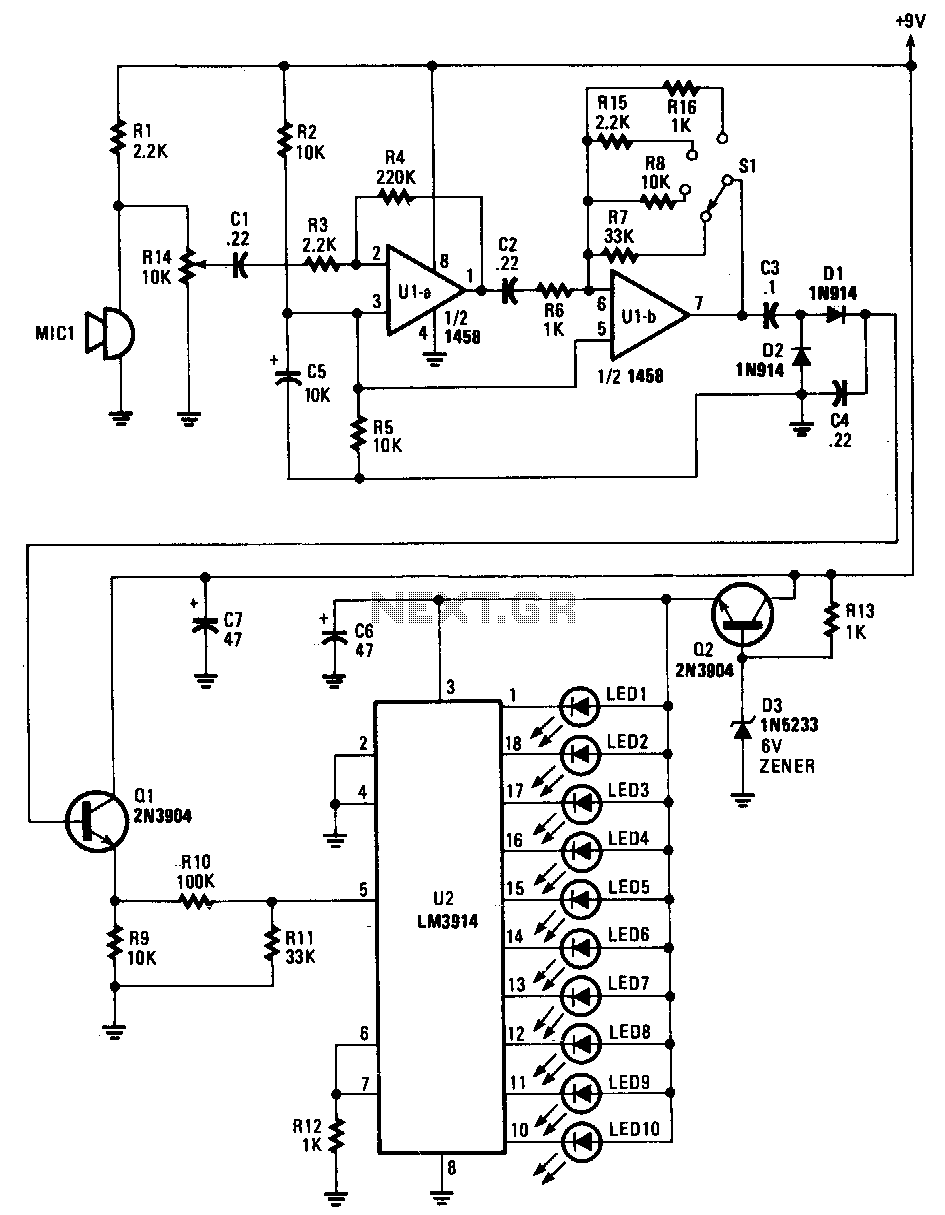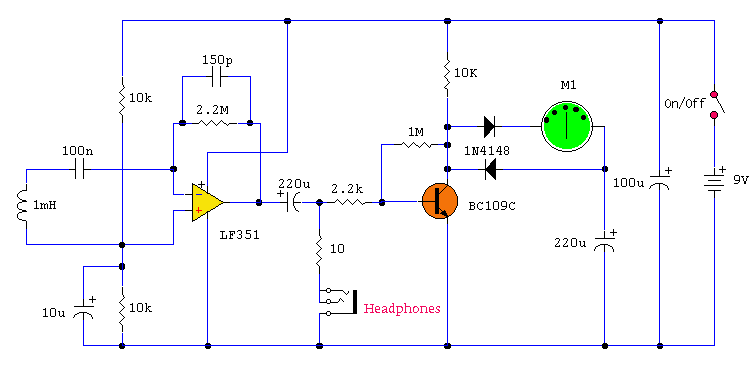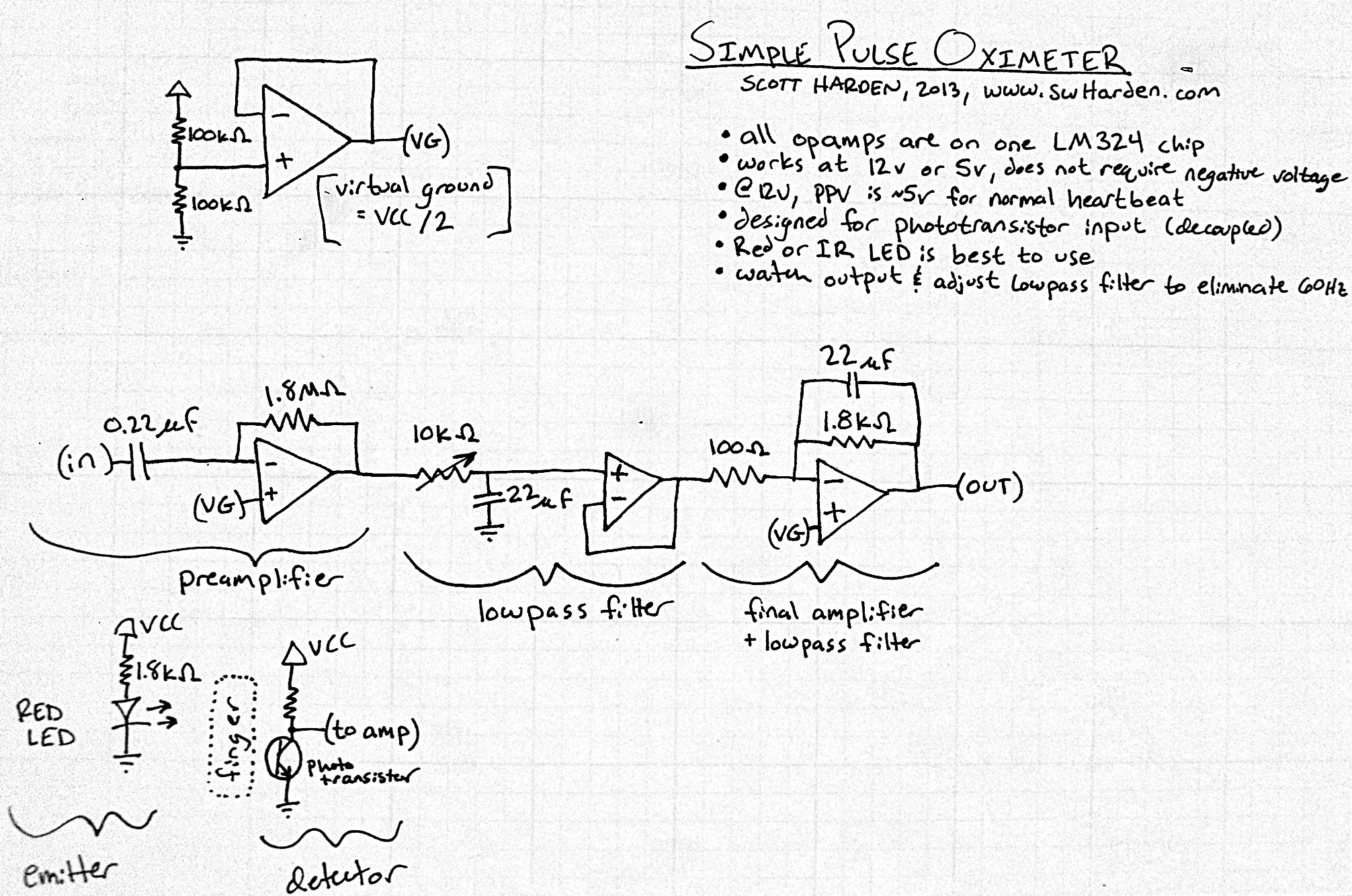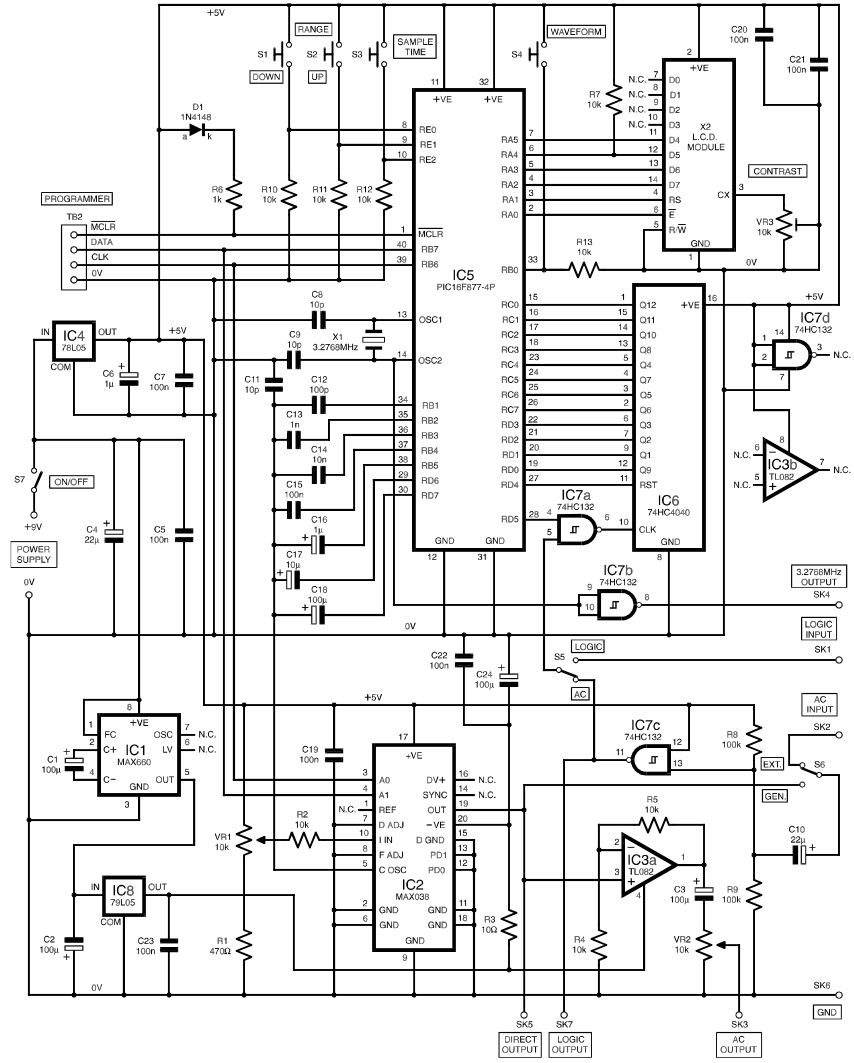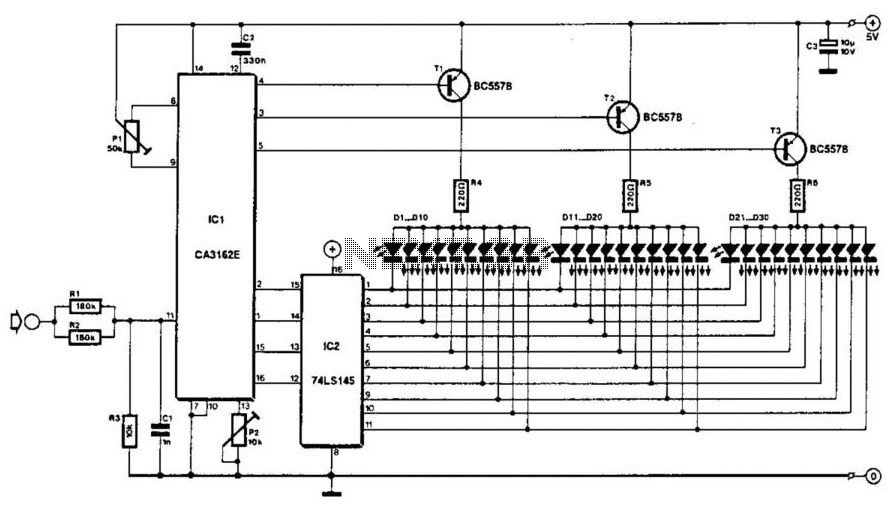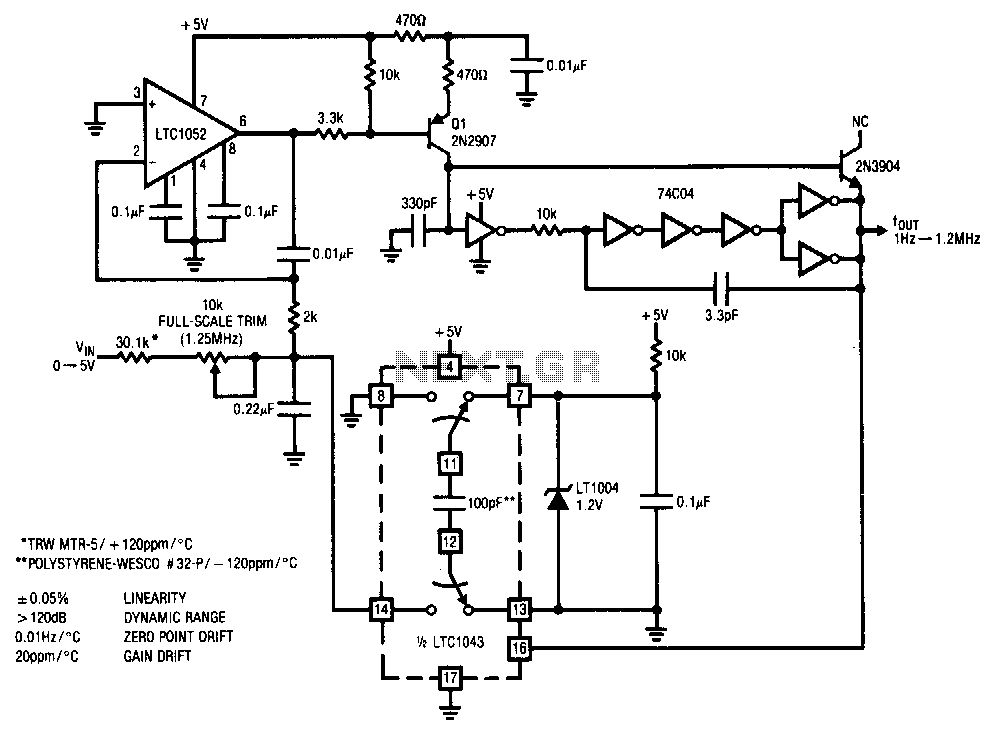
10hz 60mhz frequency meter
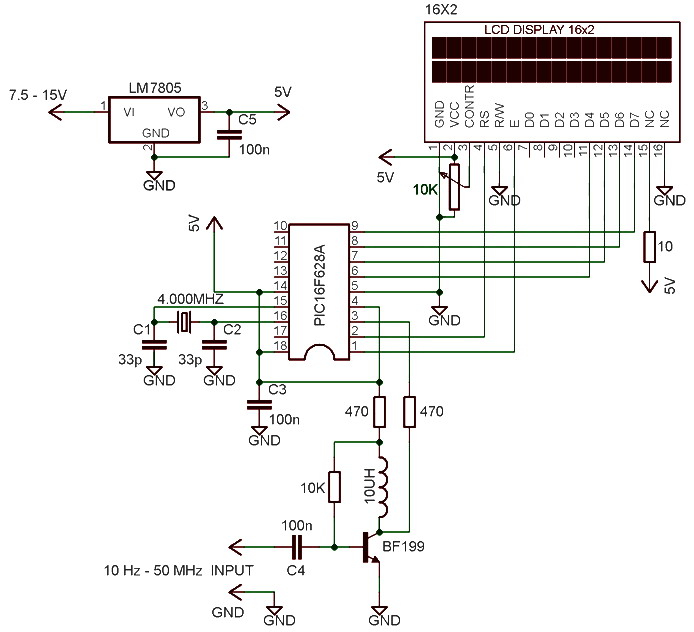
The frequency meter is capable of measuring frequencies ranging from 10 Hz to 60 MHz, with a precision or resolution of 10 Hz. It can be utilized to assess the frequency of various devices such as oscillators, transmitters, frequency generators, crystals, and others within the specified frequency range. The frequency meter employs a PIC 16F628A microcontroller and features a 16x2 LCD display. The circuit operates using a 4 MHz crystal oscillator. This electronic frequency meter is relatively simple to construct. The circuit is designed to function with a supply voltage of 5 VDC, and it includes a 7805 voltage regulator, allowing operation with input voltages between 5 VDC and 15 VDC.
The frequency meter circuit utilizes the PIC 16F628A microcontroller as its core component, which is programmed to perform frequency counting and display the results on a 16x2 LCD screen. The microcontroller interfaces with the LCD through standard parallel communication, allowing for clear and readable output. The 4 MHz crystal oscillator provides a stable clock signal for the microcontroller, ensuring accurate frequency measurements.
The circuit is powered by a regulated 5 V supply, which is achieved through the integration of the 7805 voltage regulator. This regulator ensures that the microcontroller and other circuit components receive a consistent voltage, even if the input voltage varies between 5 VDC and 15 VDC. The design includes bypass capacitors to filter out noise and stabilize the power supply.
To measure frequency, the circuit employs a frequency counting method. The input signal from the device under test is fed into the PIC microcontroller, where it is counted over a predetermined time interval. The result is then calculated and displayed on the LCD. The resolution of 10 Hz allows for precise measurements suitable for various applications in electronics.
Overall, this frequency meter circuit is an effective tool for electronic engineers and hobbyists alike, providing a straightforward solution for frequency measurement across a wide range of applications. Its simplicity in design and implementation makes it accessible for those looking to expand their measurement capabilities in electronic projects.The frequency meter can be used to measure the frequency of 10 Hz-60Mhz. The frequency meter has a level of precision or resolution of 10Hz. The frequency meter can be used to measure the frequency of the oscillator, transmitter, frequency generator, cristal, and others during the working frequency trsebut devices in the range 10 Hz - 60MHz. Circu it frequency meter using PIC 16F628A dibagun and with the viewer of the LCD 16 G— 2. Frequency meter circuit is working with the working frequency of 4MHz crystal. The series is an electronic frequency meter is quite simple to make. The following picture of the frequency meter circuit. The series of frequency meters above basically works with the source voltage 5VDC. In this series of 7805 voltage regulator has been installed, so it can be operated with a voltage of 5 - 15VDC. 🔗 External reference
The frequency meter circuit utilizes the PIC 16F628A microcontroller as its core component, which is programmed to perform frequency counting and display the results on a 16x2 LCD screen. The microcontroller interfaces with the LCD through standard parallel communication, allowing for clear and readable output. The 4 MHz crystal oscillator provides a stable clock signal for the microcontroller, ensuring accurate frequency measurements.
The circuit is powered by a regulated 5 V supply, which is achieved through the integration of the 7805 voltage regulator. This regulator ensures that the microcontroller and other circuit components receive a consistent voltage, even if the input voltage varies between 5 VDC and 15 VDC. The design includes bypass capacitors to filter out noise and stabilize the power supply.
To measure frequency, the circuit employs a frequency counting method. The input signal from the device under test is fed into the PIC microcontroller, where it is counted over a predetermined time interval. The result is then calculated and displayed on the LCD. The resolution of 10 Hz allows for precise measurements suitable for various applications in electronics.
Overall, this frequency meter circuit is an effective tool for electronic engineers and hobbyists alike, providing a straightforward solution for frequency measurement across a wide range of applications. Its simplicity in design and implementation makes it accessible for those looking to expand their measurement capabilities in electronic projects.The frequency meter can be used to measure the frequency of 10 Hz-60Mhz. The frequency meter has a level of precision or resolution of 10Hz. The frequency meter can be used to measure the frequency of the oscillator, transmitter, frequency generator, cristal, and others during the working frequency trsebut devices in the range 10 Hz - 60MHz. Circu it frequency meter using PIC 16F628A dibagun and with the viewer of the LCD 16 G— 2. Frequency meter circuit is working with the working frequency of 4MHz crystal. The series is an electronic frequency meter is quite simple to make. The following picture of the frequency meter circuit. The series of frequency meters above basically works with the source voltage 5VDC. In this series of 7805 voltage regulator has been installed, so it can be operated with a voltage of 5 - 15VDC. 🔗 External reference
